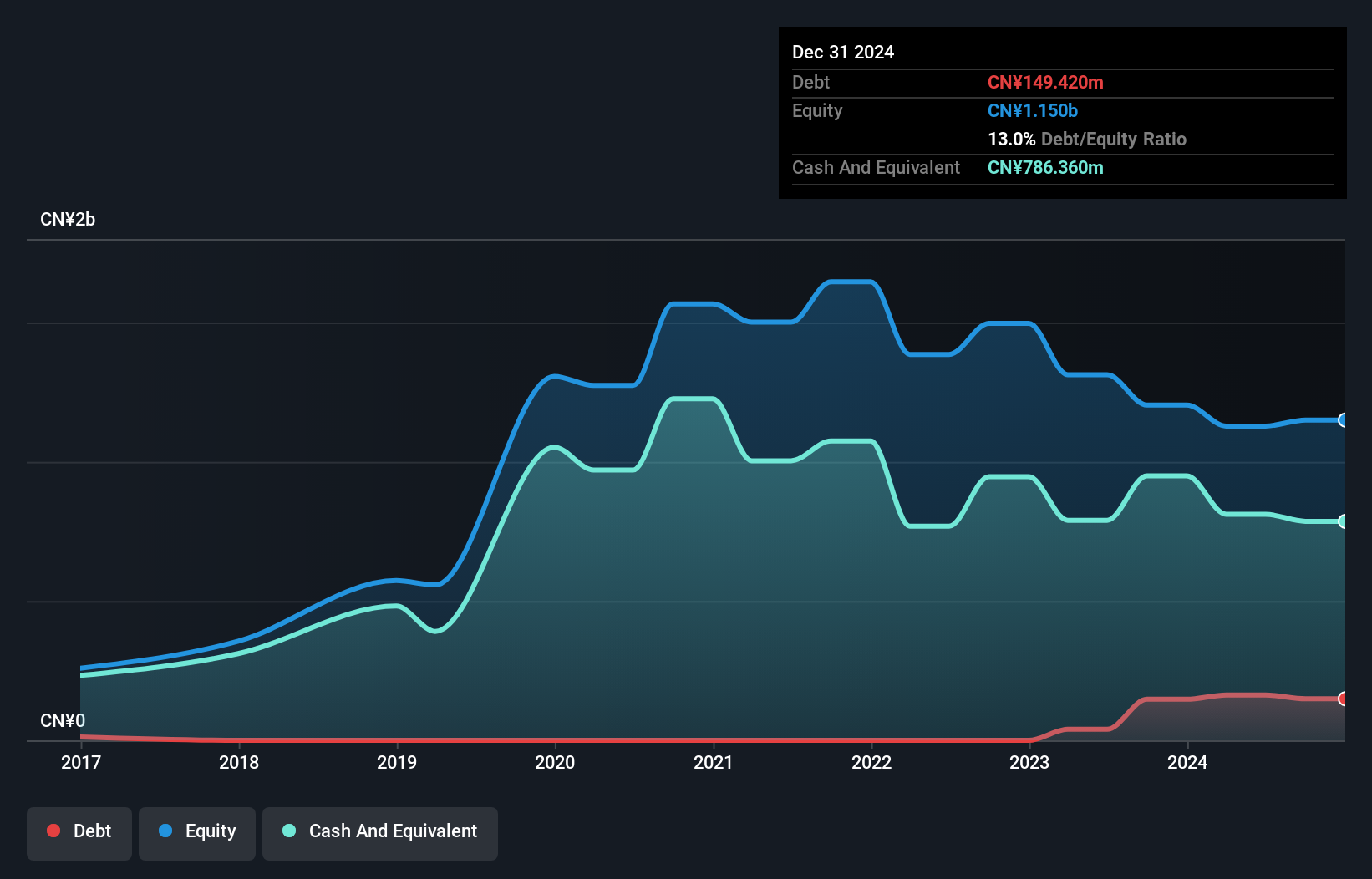David Iben put it well when he said, 'Volatility is not a risk we care about. What we care about is avoiding the permanent loss of capital.' When we think about how risky a company is, we always like to look at its use of debt, since debt overload can lead to ruin. Importantly, FriendTimes Inc. (HKG:6820) does carry debt. But is this debt a concern to shareholders?
When Is Debt A Problem?
Debt is a tool to help businesses grow, but if a business is incapable of paying off its lenders, then it exists at their mercy. If things get really bad, the lenders can take control of the business. However, a more usual (but still expensive) situation is where a company must dilute shareholders at a cheap share price simply to get debt under control. Of course, debt can be an important tool in businesses, particularly capital heavy businesses. When we think about a company's use of debt, we first look at cash and debt together.
How Much Debt Does FriendTimes Carry?
The chart below, which you can click on for greater detail, shows that FriendTimes had CN¥149.4m in debt in December 2024; about the same as the year before. But on the other hand it also has CN¥786.4m in cash, leading to a CN¥636.9m net cash position.

How Strong Is FriendTimes' Balance Sheet?
We can see from the most recent balance sheet that FriendTimes had liabilities of CN¥247.4m falling due within a year, and liabilities of CN¥4.97m due beyond that. Offsetting this, it had CN¥786.4m in cash and CN¥75.1m in receivables that were due within 12 months. So it can boast CN¥609.1m more liquid assets than total liabilities.
This excess liquidity is a great indication that FriendTimes' balance sheet is almost as strong as Fort Knox. With this in mind one could posit that its balance sheet means the company is able to handle some adversity. Succinctly put, FriendTimes boasts net cash, so it's fair to say it does not have a heavy debt load! When analysing debt levels, the balance sheet is the obvious place to start. But ultimately the future profitability of the business will decide if FriendTimes can strengthen its balance sheet over time. So if you're focused on the future you can check out this free report showing analyst profit forecasts.
Check out our latest analysis for FriendTimes
Over 12 months, FriendTimes reported revenue of CN¥1.2b, which is a gain of 10%, although it did not report any earnings before interest and tax. That rate of growth is a bit slow for our taste, but it takes all types to make a world.
So How Risky Is FriendTimes?
Statistically speaking companies that lose money are riskier than those that make money. And in the last year FriendTimes had an earnings before interest and tax (EBIT) loss, truth be told. And over the same period it saw negative free cash outflow of CN¥56m and booked a CN¥49m accounting loss. But the saving grace is the CN¥636.9m on the balance sheet. That means it could keep spending at its current rate for more than two years. Overall, its balance sheet doesn't seem overly risky, at the moment, but we're always cautious until we see the positive free cash flow. The balance sheet is clearly the area to focus on when you are analysing debt. However, not all investment risk resides within the balance sheet - far from it. To that end, you should learn about the 2 warning signs we've spotted with FriendTimes (including 1 which shouldn't be ignored) .
At the end of the day, it's often better to focus on companies that are free from net debt. You can access our special list of such companies (all with a track record of profit growth). It's free.
New: AI Stock Screener & Alerts
Our new AI Stock Screener scans the market every day to uncover opportunities.
• Dividend Powerhouses (3%+ Yield)
• Undervalued Small Caps with Insider Buying
• High growth Tech and AI Companies
Or build your own from over 50 metrics.
Have feedback on this article? Concerned about the content? Get in touch with us directly. Alternatively, email editorial-team (at) simplywallst.com.
This article by Simply Wall St is general in nature. We provide commentary based on historical data and analyst forecasts only using an unbiased methodology and our articles are not intended to be financial advice. It does not constitute a recommendation to buy or sell any stock, and does not take account of your objectives, or your financial situation. We aim to bring you long-term focused analysis driven by fundamental data. Note that our analysis may not factor in the latest price-sensitive company announcements or qualitative material. Simply Wall St has no position in any stocks mentioned.
About SEHK:6820
FriendTimes
Through its subsidiaries, develops, publishes, and operates mobile games in the People’s Republic of China and internationally.
Excellent balance sheet with reasonable growth potential.
Market Insights
Community Narratives




